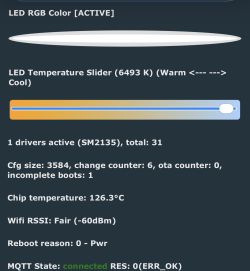 .
.
I would like to ask as a non-knowledgeable whether such a combination of ESP communication will be trouble free? it is rumoured that esp loses packets is this true?
The ESP8266 will be connected to the display via a UART connector and there will also be a small program to sensor data sent to the display. The ESP32 will be more complex with sensors etc and my idea is that the ESP32 will send data to the ESP8266 and it will send data to the display, i.e. LCD-RS-ESP8266-WIFI-ESP32 two-way communication. How to say I want to do RS over Wifi.
Because I think it would be a better solution for me than LCD-Microprocessor I want to get rid of the number of cables.





